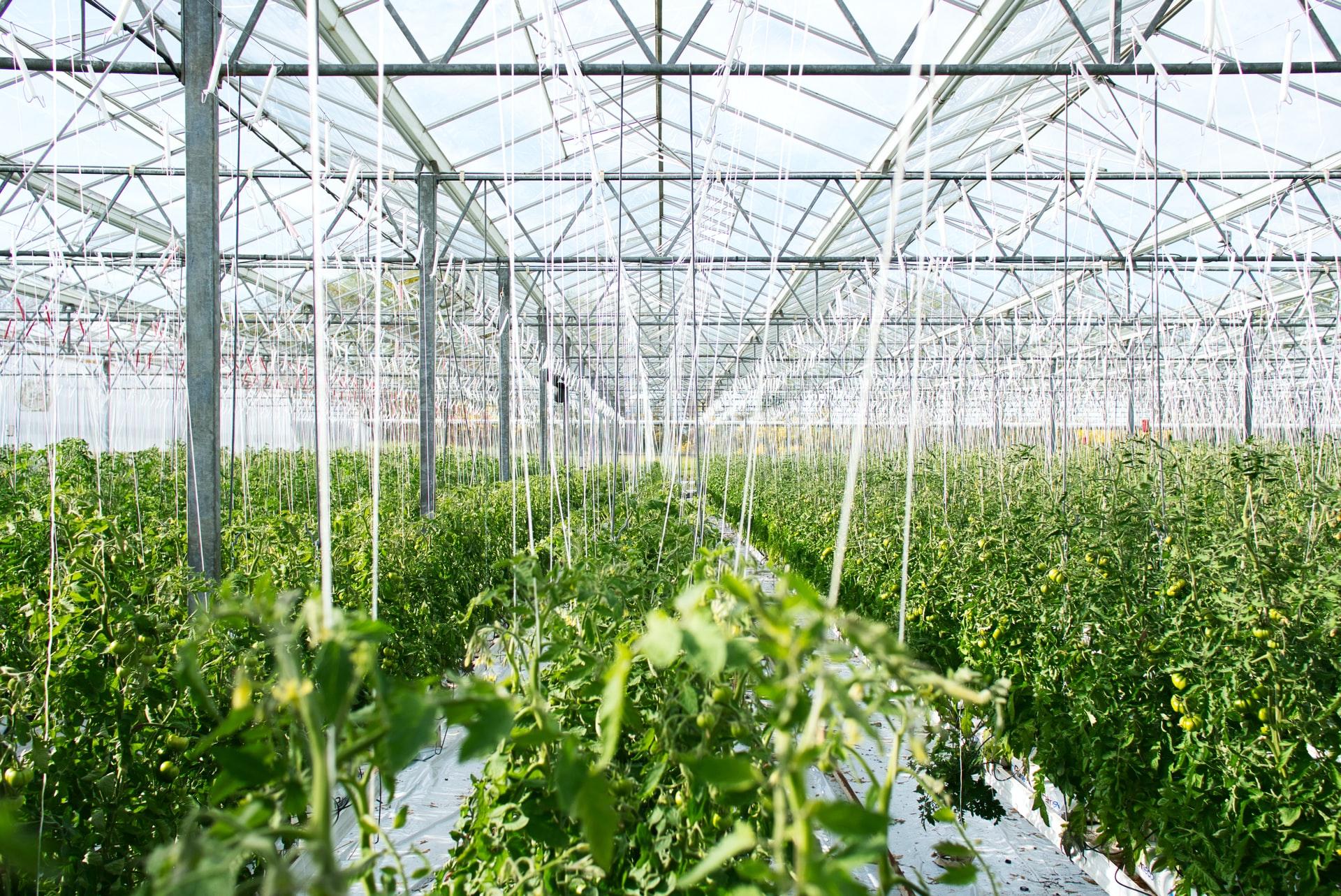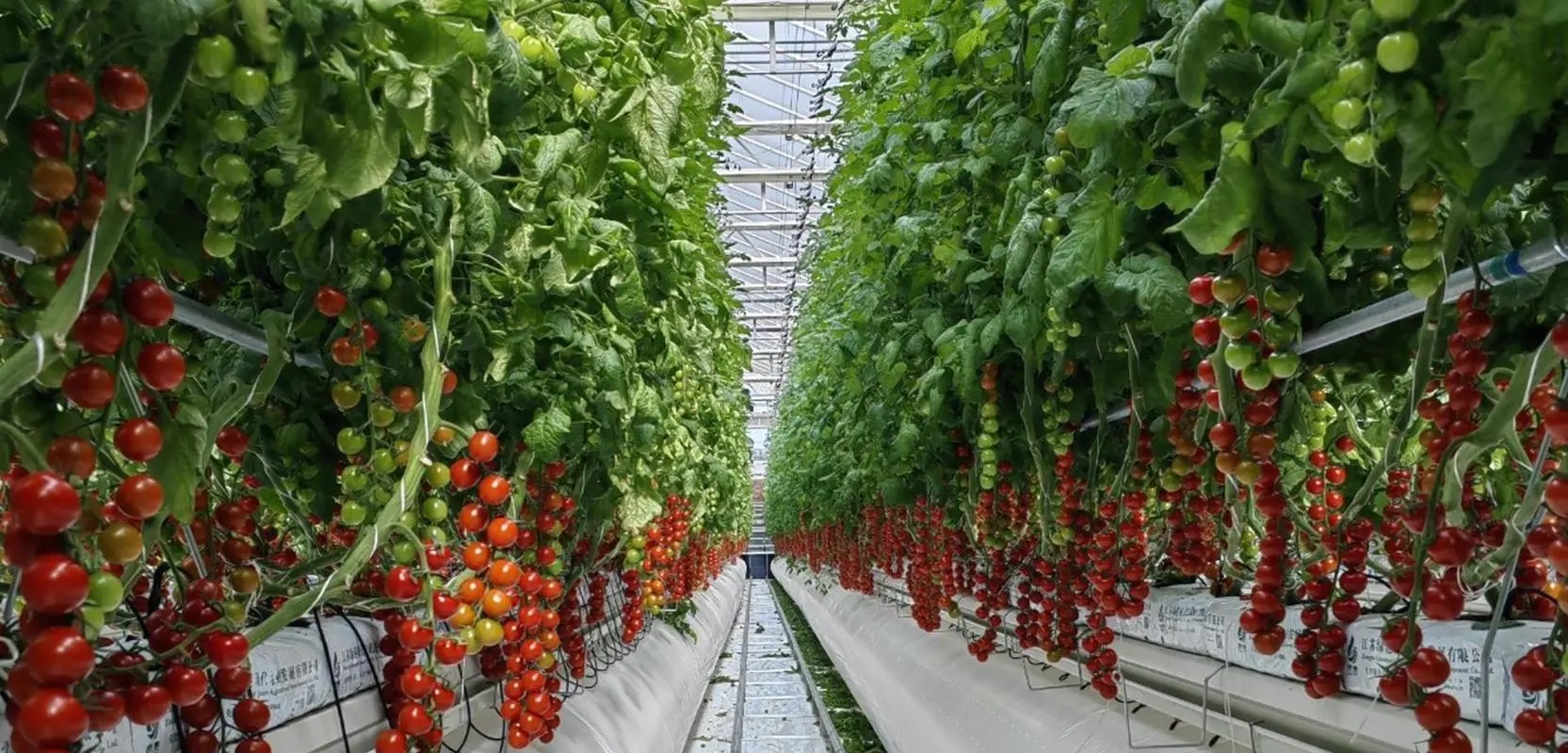Greenhouse Tomato
2024-06-06
Drip Fertigation and Climate Control System for Greenhouse Tomato Cultivation
Tomato cultivation in greenhouses has gained significant popularity due to controlled environmental conditions that promote better growth and yield. However, achieving optimal growth still requires efficient water and nutrient management. XiaomaIOT drip fertigation and climate control system provides a sustainable solution for tomato cultivation in the greenhouse.

1. System Design and Setup
a. Layout Planning:
- Design the greenhouse layout, ensuring sufficient space for plant growth and maintenance access.
- Determine the placement of the main water supply, sub-mains, and laterals.
- Ensure the drip lines are evenly spaced, typically 30-50 cm apart for tomato plants.
b. Components Required:
- Water source (well, reservoir, or municipal supply)
- Pump (if needed to maintain adequate water pressure)
- Filtration system (to prevent clogging of drip emitters)
- Cabinet frequency converter (to ensure consistent pressure across the system)
- Drip lines with emitters (preferably pressure-compensating emitters)
- Fertigation Machine
- Valves and connectors
- Environmental sensors
c. Installation:
- Install the mainline from the water source to the greenhouse.
- Connect sub-mains to the mainline, and attach laterals with drip lines to the sub-mains.
- Position emitters close to the base of each tomato plant.
- Set up the fertigation machine in line with the irrigation system to automate nutrient delivery.
2. Watering Schedule
a. Frequency and Duration:
- Watering needs depend on the growth stage, greenhouse temperature, and humidity.
- Young seedlings may require short, frequent watering; mature plants need less frequent but deeper watering.
- Monitor soil moisture levels using sensors.
b. Optimization:
- Set a timing schedule for automatic watering based on plant and environmental data through XiaomaIOT fertigation system.
- Adjust schedules seasonally to accommodate changes in evapotranspiration rates.
3. Nutrient Management
a. Fertilization Plan:
- Conduct a soil test before planting to determine nutrient levels.
- Use a balanced fertilizer with macro and micronutrients tailored for tomatoes (e.g., N-P-K ratios suitable for different growth stages).
b. Fertigation:
- Prepare a nutrient solution according to XiaomaIOT's guidelines.
- Calibrate the fertigation machine to deliver precise amounts.
- Start with a lower concentration, gradually increasing as plants grow.
- Regularly test soil and tissue samples to adjust nutrient levels.
4. Monitoring and Maintenance
a. System Check:
- Regularly inspect the irrigation lines, emitters, and connectors for leaks or blockages.
- Clean filters to maintain water flow efficiency.
b. Plant Health:
- Monitor plants for signs of over or under-watering (e.g., yellow leaves or wilting).
- Check for pest and disease symptoms, ensuring timely intervention.
c. Environmental Control:
- Maintain optimal temperature and humidity within the greenhouse to support plant health through the XiaomaIOT climate control system.
- Automatically control ventilation, shading, or heating solutions through XiaomaIOT greenhouse automation system.

XiaomaIOT drip fertigation and climate control system significantly enhances tomato cultivation efficiency, ensures precise water and nutrient delivery and promotes healthy plant growth and high yields.

Xiaoma IOT

